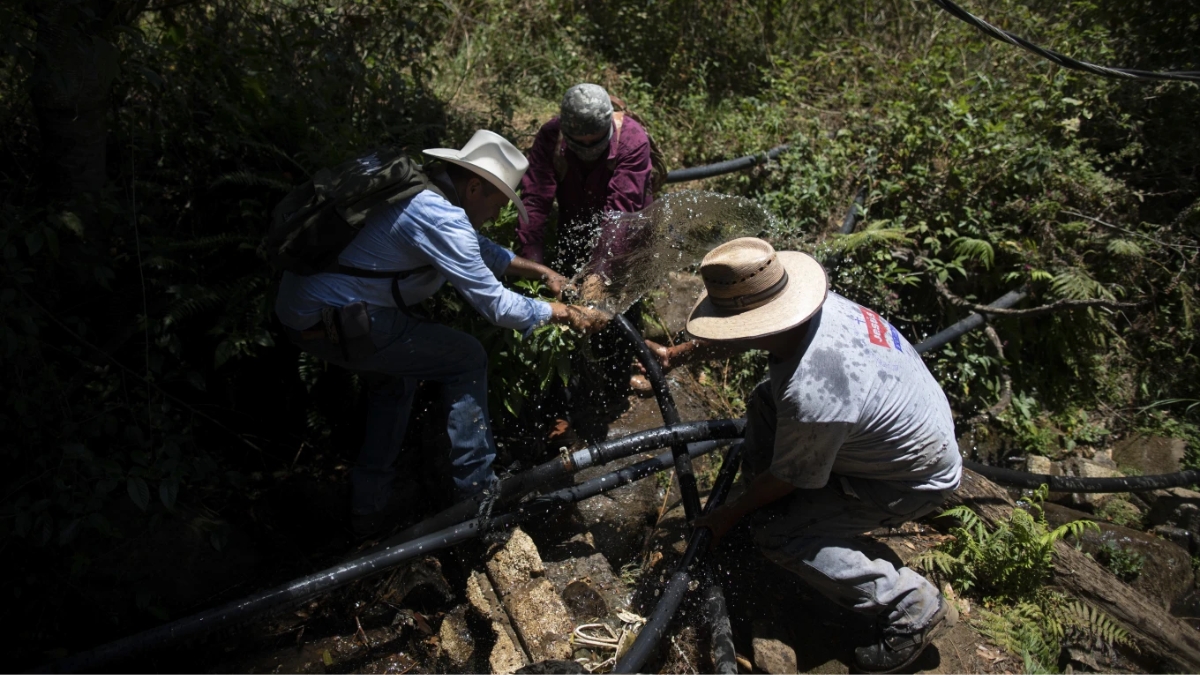Avocado, a cash crop grown extensively in Mexico’s Michoacan, has filled the pockets of many big farmers for well over a decade. Now, the water supply to these vast orchards is being sabotaged. Small-scale farmers and residents are behind the attacks. But they are just trying not to die of thirst.
The issue is complex. There is a threat of violence and involvement of gangs, too.
We explain what is happening in Mexico, and why.
Attacks on avocado orchards
Avocado cultivation requires a lot of water. That was not a big problem until a couple of years ago, when Mexico started facing acute water shortages.
In Michoacan, the avocado orchards are usurping up the limited water available in the region. There are illegal water pumps and unlicensed containment ponds. These, alongside irrigation equipment, have been used by the plantations’ landowners to suck mountain streams dry, while keeping their cash crops watered.
Small villages in the lower parts of the area have no water. Subsistence farmers and their families here are struggling.
“The streams, the springs, the rivers have been drying up and the water has been captured, mainly to be used for avocados and berries,” local activist Julio Santoyo told AP.
Impact Shorts
More ShortsLocal residents have proposed an agreement to solve the water scarcity issue in their area. According to the agreement, the landowners would be given 20 per cent of the water from local streams, while the remaining 80 per cent of water would flow as usual. This would prevent the orchards from being completely denied of water. However, they have not received any response yet.
The situation has become desperate. People have been forced to hike up the hills to rip out illegal water pumps and shovel down unlicensed water-holding ponds
They are risking their lives to sabotage the avocado orchards carved out of the pine-covered hills.
The threat is from cartels.
A dangerous undertaking for water
These actions by activists and subsistence farmers is laying the ground for a potential conflict with avocado growers. These cash crop cultivators often pay protection money to the infamous drug cartels of Mexico. Some of them are even sponsored by these criminal syndicates.
The money from illegal logging and extortion of avocado growers fills the pockets of these drug cartels. The protests against avocado farming, as well as the attacks on their irrigation infrastructure, have irked these cartels.
“We are running a serious risk of them killing us for protesting,” Gómez Cortés from the El Sauz hamlet told AP. “Out of necessity, we are doing what the government should be doing.”
That raises an important question: what has the government done to address the issue so far?
Inaction from government authorities
Little has been done against the water takeovers by the avocado growers by the government. Although Alejandro Méndez, Michoacan’s state environment secretary, acknowledged that the problem has spiralled way too much, adequate corrective action has not been taken.
This is the larger trend in Mexico. Wealthy and powerful newcomers have constructed unlicensed private dams and holding ponds. Since the coronavirus pandemic, there has been a significant rise in the construction of high-end residential areas that come with private lakes, designed exclusively for water-skiing and swimming. This has led to a considerable amount of water being diverted from the reservoirs that the local citizens depend on for their water supply.
Increasingly since the coronavirus pandemic, there has been a huge increase in the development of luxury compounds with private lakes for water skiing and swimming. That has prevented huge amounts of water from even reaching some reservoirs that the citizens rely on for water supply.
Lakes disappear and commoners remain parched while these acts keep going unchecked.
Pipelines that transport water from reservoirs in the country to other places have major leaks. These lead to a huge amount of waste. Still, they remain unfixed.
These domestic issues are long-standing and deeply rooted. But, there are global factors, too.
The root cause of the water shortage
Mexico has received significantly less rainfall this year, registering 29.6 per cent below the national average, officials from the water commission reported. The central valley of Mexico, including areas surrounding the capital, experienced below-average rainfall in 2023, worsening drought conditions that have been intensifying over the past four years.
The Cutzamala reservoir system, critical for water supply to the outskirts of Mexico City, is currently operating at approximately one-third of its capacity. Some reservoirs have dipped as low as 30 per cent, according to officials.
Experts attribute the decrease in rainfall to El Niño and subsequent heat waves. El Niño-Southern Oscillation (ENSO), along with the Pacific Decadal Oscillation (PDO) and sea surface temperatures in the tropical Atlantic, have been key factors in the recent drought affecting northern Mexico.
Studies indicate that climate change is strengthening El Niño patterns, leading to reduced rainfall. Additionally, global warming is increasing atmospheric humidity demand and may be altering circulation patterns. This shift contributes to prolonged drought periods in northwestern Mexico, a trend observed since 1994 that has significantly depleted water resources in the region.
With inputs from agencies
)